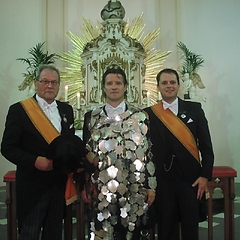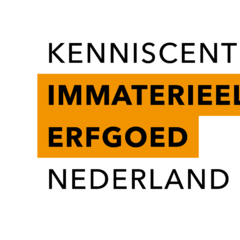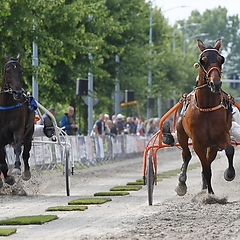Hindeloopen is a small Frisian town by lake IJsselmeer, with a unique culture. This originates from its past as merchant town and harbour. The decorative paintwork, its own different dialect, the colourful traditional costumes and ice-skating culture are examples of this. Hindeloopen paintwork is world-famous. It is a technique to decorate furniture and other useful objects with elegant flowers, leaves and curls. Common colours are reddish brown, blue, white or green as background and ochre hues, white, blue and red for the decorations. The ‘Hylper’ dialect, with its typical rising diphtongs, is quite different from normal Frisian and is still spoken in Hindeloopen. The cultural uniqueness of Hindeloopen is also quite visible in the traditional costumes, characterised by the combination of chintzes with East-Indian coloureds, checkered fabrics. Chintz is a colourful, flowery painted fabric, originally from India. Hindeloopen is of course known as one of the Frisian Eleven Towns. Other forms of ice-entertainment are known in Hindeloopen, like ice sledges racing, with a kind of small barge that is propelled across the ice with two poles.


